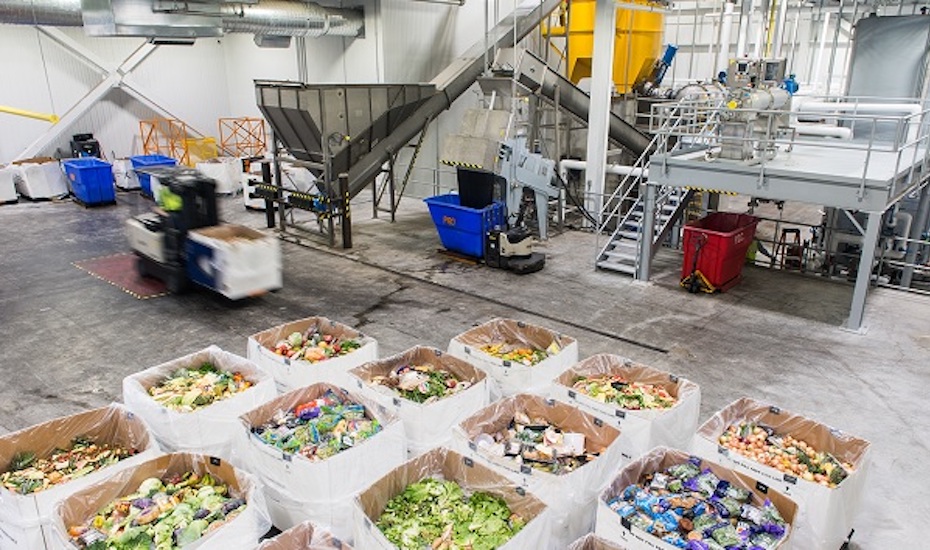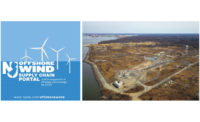Renewable natural gas projects will be part of multi-billion-dollar energy infrastructure investments announced by Canadian energy developer Enbridge Inc. and New Jersey's largest utility.
Enbridge will include the projects in the $C2.4 billion it said it is committing to this year for natural gas and liquids infrastructure and renewable projects, while New Jersey utility PSE&G said it seeks approval to invest $2.5 billion to overhaul its natural gas infrastructure, which will feature demonstrations to introduce renewable natural gas and hydrogen into its system.
Projects to produce renewable natural gas from organic waste are among those now eligible for a new, 10-year tax credit from the Inflation Reduction Act climate mitigation funding law enacted last year. More than 500 such projects are underway in the U.S. gas-utility sector, about half now operating, Karen Harbert, CEO of the American Gas Association, told the CERAWeek by S&P Global conference this month in Houston.
Greg Ebel, Enbridge president and CEO, said the firm will continue growth in conventional energy infrastructure “while also playing a leadership role in new energy technology investments and the energy transition.”
The company is acquiring a 10% stake in Divert Inc., a leading U.S.-based food waste management company expanding into renewable natural gas, which includes investment opportunities to develop waste-food-to-gas projects across the U.S., “providing line of site to greater than $1 billion of new capital growth,” he said.
While Ebel said the U.S. has “put a lot of carrots on the table” in clean energy subsidies that made the U.S. more competitive in attracting investments, among other items included in Enbridge’s anticipated 2023 energy investments are new storage facilities on the Gulf Coast to support LNG exports.
The largest portion of PSE&G’s $2.5-billion, three-year investment is a systematic cast iron and unprotected steel replacement program. It will replace 1,140 miles of main, including 810 miles of utilization pressure cast iron, 200 miles of elevated pressure cast iron mains, 200 miles of unprotected steel main and 80 miles of steel and plastic mains.
But the program also includes a $123-million renewable natural gas project that will allow injection of gas from landfills into the distribution system, and a $29-million hydrogen demonstration project that will blend up to 2% clean hydrogen with the natural gas.
“The inclusion of renewable natural gas is yet another important low-carbon evolutionary step in the transition to cleaner fuels,” the utility said in its filing to the New Jersey Board of Public Utilities, noting its first synthetic fuel was produced from coal in the early 20th century.
An added benefit of capturing and processing landfill gas is reducing the amount of methane emitted, the utility said.
The project will include a 1-MW power-to-gas plant that will allow injection of about 1 billion cu ft per year of renewable natural gas into its system.
The hydrogen project will provide PSE&G with construction and operations experience, as well as lessons learned to develop and scale use of the alternative fuel into its distribution system, the utility said. It acknowledged some concern over hydrogen’s compatibility with natural gas infrastructure, but data indicates that up to 20% hydrogen blends can be a suitable replacement for pure natural gas in distribution systems and for end uses, the company said in its filing.
“These projects are an important first step toward decarbonizing and modernizing New Jersey’s energy system and building confidence in the use of renewable alternatives to natural gas,” the utility said.
But New Jersey Rate Counsel Brian Lipman said the cost of renewable natural gas is “several times more expensive than natural gas” and it is unclear whether burning the substance is more beneficial to the environment than burning natural gas.
New Jersey Environment Director Doug O’Malley added that renewable natural gas is “wildly expensive and wildly inefficient” because of its fugitive methane gas emissions.” Maximizing system energy increases methane emissions, he said.
New Jersey Gov. Phil Murphy set a goal to achieve 100% clean energy by 2035 and state regulators agreed earlier this month to accept by June 23 applications under a third solicitation for offshore wind projects, this time for between 1,200 MW to 4,000 MW.
Lipman and some BPU commissioners are concerned with the rising cost of offshore wind construction and associated transmission projects, but the third solicitation was approved unanimously.
A federal judge on March 10 also denied claims by New Jersey and New York residents that the U.S. Interior Dept. must conduct a thorough environmental analysis to consider how future offshore wind construction in over 800,000 acres chosen in 2021 near the two states would impact the environment.
U.S. District Judge Dabney Friedrich in Washington, D.C., said Interior did not need to conduct a thorough analysis before choosing areas near the states for future offshore wind farms because the selection does not authorize developers to install turbines.
So far, New Jersey has approved 3,700 MW in three offshore wind projects.





Post a comment to this article
Report Abusive Comment